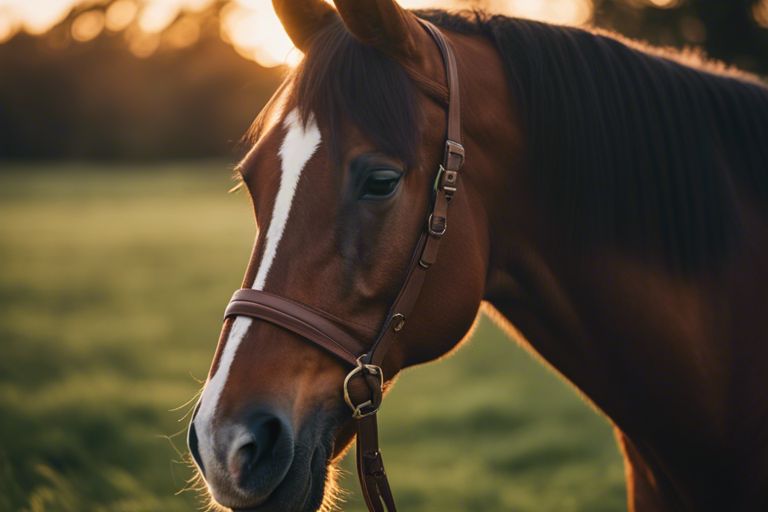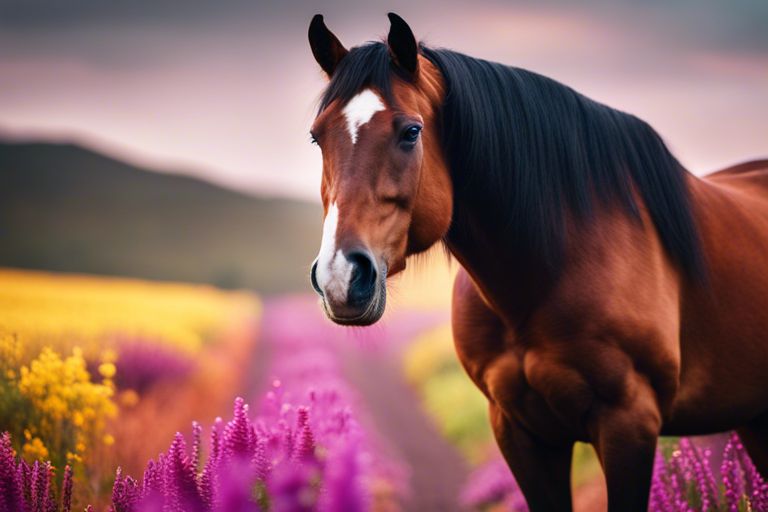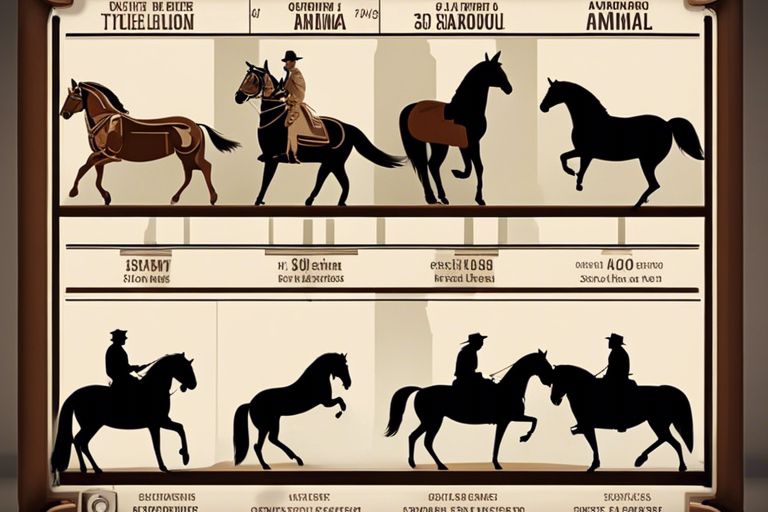Many equestrian enthusiasts dream of capturing the grace and beauty of their beloved horses through photography. In this guide, you will discover the crucial steps to planning a successful equine photoshoot. From scouting locations to considering lighting and preparing your horse, you will learn how to create stunning equestrian portraits that truly showcase the spirit of these magnificent creatures.
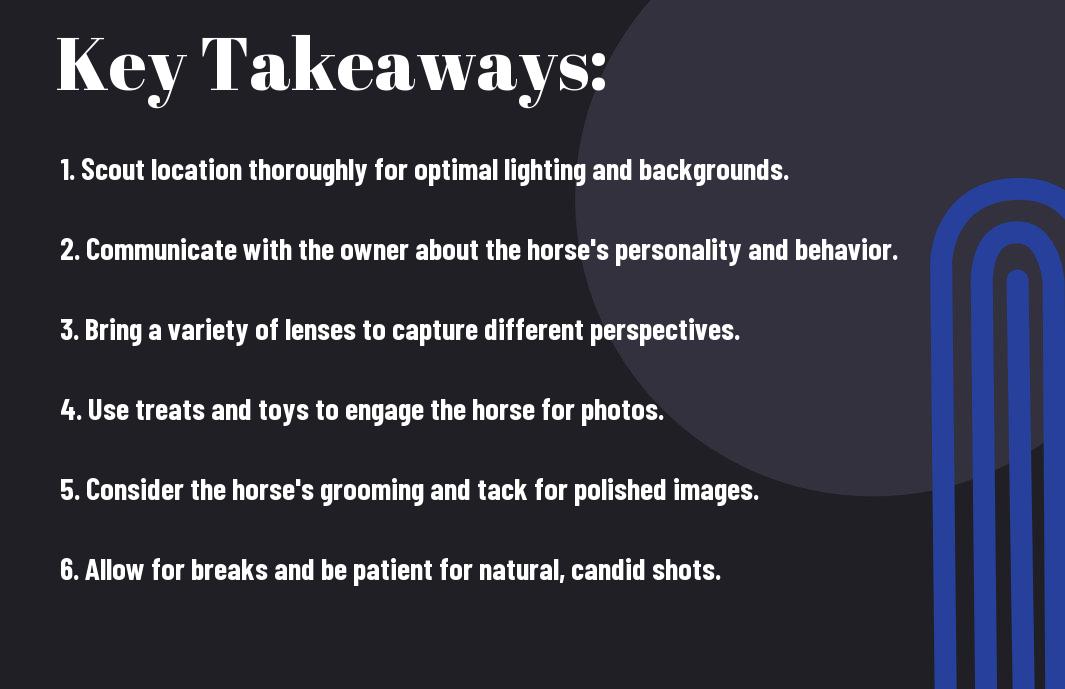
Pre-Session Preparation
Identifying Your Goals and Vision
Before you head out for your equine photography session, take some time to identify your goals and vision for the shoot. Consider what you want to capture in the photos – is it the bond between horse and rider, the majestic beauty of the horse in motion, or the peacefulness of a horse grazing in a field? Clarifying your goals will help you plan the session more effectively and ensure that you capture the images you envision.
Choosing the Right Location and Time
Preparation is key when it comes to choosing the right location and time for your equine photography session. Consider locations that offer beautiful backdrops and lighting that will enhance your photos. Whether you prefer a rustic barn setting, a sprawling field, or a serene beach, select a location that aligns with your vision. Additionally, pay attention to the time of day – early morning or late afternoon tends to offer the best lighting for photography, creating a warm and soft glow that will make your equine images truly magical.
Equine Models and Handlers
Selecting the Perfect Horse
Perfect equine models can make or break your photography session. When choosing the perfect horse for your shoot, consider factors such as breed, conformation, coat color, and temperament. You want a horse that not only looks stunning but also behaves well during the session. A calm and well-trained horse will make your job as a photographer much easier and will ensure a successful outcome.
Working with Owners and Handlers
Handlers and owners play a crucial role in the success of your equine photography session. Clear communication and collaboration are key when working with them. Discuss the vision and goals for the shoot with the owners beforehand to ensure everyone is on the same page. Encourage owners and handlers to bring treats or toys that can help grab the horse’s attention and keep them engaged during the session.
The relationship between the horse, owner, handler, and photographer is important for capturing beautiful images. Make sure to establish a good rapport with them to create a relaxed and enjoyable atmosphere during the session.
Safety Precautions and Emergency Procedures
With large and powerful animals like horses, safety should always be a top priority. When working with equine models, always have a handler present to assist with the horse and ensure a safe environment. **Avoid standing directly behind the horse** to prevent getting kicked and always maintain a safe distance while shooting. Familiarize yourself with basic horse behavior and body language to anticipate any potential risks or signs of distress.
**In case of an emergency, have a plan in place**. Make sure you know who to contact for veterinary care or assistance if needed. Keep a first aid kit handy with importants like bandages, antiseptic spray, and emergency contact numbers. **Your preparedness can make a significant difference in handling unexpected situations during the photoshoot**.
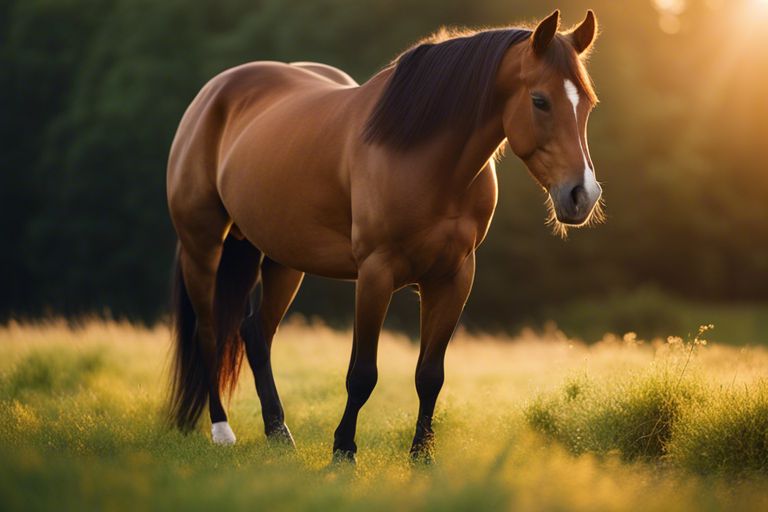
Equipment and Gear
Camera and Lens Selection
For capturing stunning equine photos, the right camera and lens are important. With a DSLR or mirrorless camera, you can adjust settings like aperture, shutter speed, and ISO to control the image outcome. In the matter of lenses, a telephoto lens with a focal length of at least 70-200mm is ideal for equine photography, allowing you to capture intimate details from a distance.
Lighting and Reflectors
To achieve beautiful lighting in your equine photography session, consider using natural light during the golden hours – just after sunrise or before sunset. Reflectors can also help bounce light onto your subject, creating a soft and flattering glow. Position your horse so that the light enhances their features and creates a captivating atmosphere.
Selection: When using reflectors, choose ones in shades like silver, gold, or white to manipulate the light and create the desired effect. Experiment with different angles to find the most flattering light for your equine subject.
Additional Accessories and Props
Equipment such as a tripod, grooming tools, and treats can make your equine photography session run smoothly. A tripod will ensure sharp images, while grooming tools can help make the horse look its best. Treats can also help capture the horse’s attention and create a cooperative environment during the shoot.
It is important to remember that props should complement and not overwhelm the main subject. Simple, natural props like flowers, ribbons, or a rustic fence can add a touch of character to the photos without taking away from the beauty of the horse.
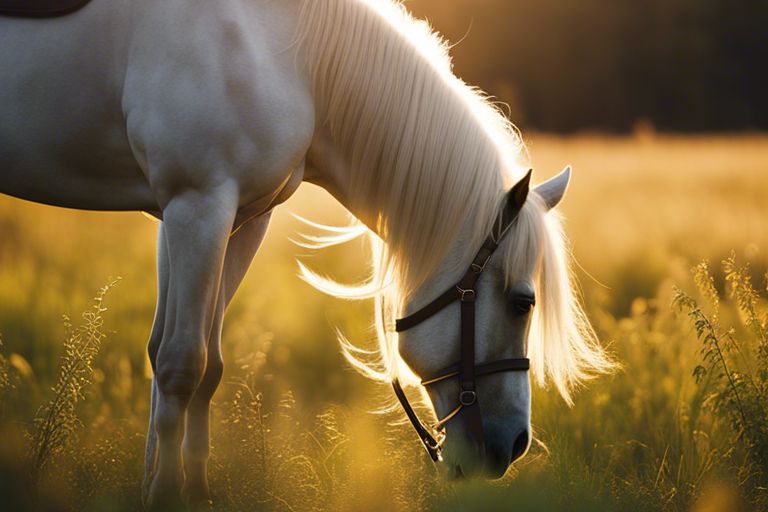
Composition and Posing
Capturing the Horse’s Personality
Once again, when it comes to composing your equine photography shots, it’s crucial to focus on capturing the personality and essence of the horse. Your goal should be to showcase the unique characteristics and spirit of each horse you photograph.
Experimenting with Angles and Perspectives
One way to add interest to your equine photography is by experimenting with different angles and perspectives. By changing your vantage point, you can create visually compelling images that stand out. Try shooting from low angles to emphasize the horse’s power and grandeur, or get up high to capture a different view of the horse in its environment.
To truly capture the horse’s beauty and elegance, consider getting creative with your angles. Don’t be afraid to try unconventional perspectives to add a unique touch to your equine photography.
Working with Natural Light and Shadows
An important element to consider when planning your equine photography session is working with natural light and shadows. Natural light can enhance the mood and atmosphere of your photos, creating stunning effects and highlighting the horse’s features.
With the right positioning and timing, you can use the interplay of light and shadows to add depth and dimension to your equine photography. Experiment with shooting during different times of the day to see how the light interacts with the horse and the surrounding environment.
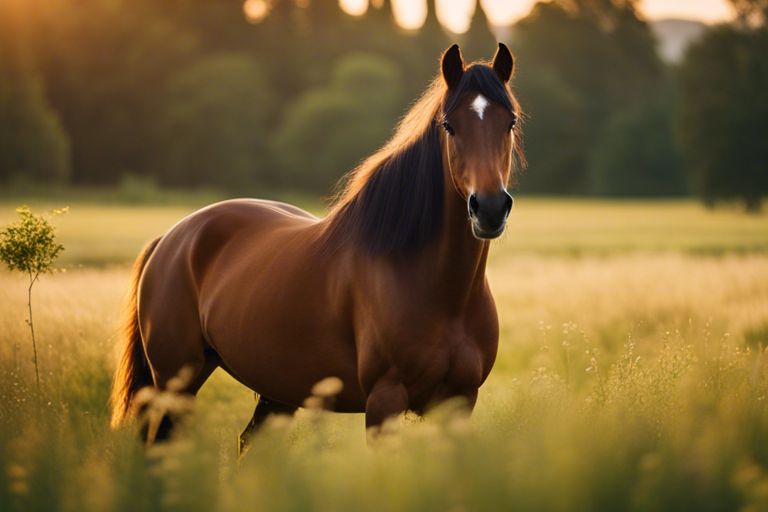
Directing the Shoot
Despite your best planning efforts, when the day of the equine photoshoot arrives, you’ll need to be prepared to direct the shoot effectively. This involves communicating with the horse and handler, anticipating and adapting to unforeseen situations, and maximizing your shooting time.
Communicating with the Horse and Handler
One key aspect of directing a successful equine photoshoot is establishing clear communication with both the horse and its handler. Horses are incredibly perceptive animals and can pick up on your energy and emotions. By maintaining a calm and confident demeanor, you can help reassure both the horse and its handler, creating a more relaxed and cooperative atmosphere for the shoot. Make sure to also communicate clearly with the handler, discussing the desired poses and shots beforehand to ensure everyone is on the same page.
Anticipating and Adapting to Unforeseen Situations
Handler experience can vary, and unexpected situations may arise during the photoshoot. This could range from the horse being uncooperative, the weather suddenly changing, or equipment malfunctions. Being prepared to adapt and think on your feet is crucial in such moments. Maintain a flexible attitude and have backup plans in place to ensure that you can still capture stunning photos, even in challenging circumstances.
Adapting to unforeseen situations is all part of the art of equine photography. Embrace the challenges and use your creativity to turn unexpected moments into opportunities for unique and striking shots.
Maximizing Your Shooting Time
Shooting an equine photography session requires careful time management to make the most of your available shooting time. Plan your shots in advance, ensuring that you have a clear idea of the poses and compositions you want to capture. Be efficient with your directions to the handler and quick in adjusting settings on your camera to minimize downtime. Do not forget, the light at sunrise and sunset is often the most flattering, so make the most of these golden hours for your shoot.
With effective communication, adaptability, and time management skills, you can confidently direct an equine photoshoot that yields stunning results. Stay flexible, creative, and embrace the unexpected to capture truly unforgettable images.
Post-Session Workflow
Image Review and Selection
Selection – After a productive equine photoshoot, the first step in your post-session workflow is to review and select the best images to edit. Take your time to carefully go through all the shots to identify the ones that truly capture the essence of the horse and the bond between the horse and its rider.
Editing and Retouching Techniques
Any – Once you have chosen your favorite images, it’s time to bring them to life through editing and retouching. This step is crucial as it can enhance the beauty of the photographs and make them truly stand out. You can adjust the exposure, colors, contrast, and sharpness to create stunning equine portraits.
For instance, you can use editing techniques to remove distractions from the background, enhance the horse’s coat color, and add a soft glow to create a dreamy atmosphere in the images. Pay attention to details but also ensure that the final result looks natural and authentic to preserve the magic of the moment captured.
Delivering Final Images to Clients
One – After you have finished editing and retouching the selected images, it’s time to deliver the final photos to your clients. You can create a beautiful online gallery or a personalized photo album to showcase the stunning equine portraits you have created. Make sure to communicate with your clients to understand their preferences and deliver the images in the format and size they desire.
Another – Providing exceptional customer service is imperative in the equine photography business. Ensure timely delivery of the final images and offer assistance if clients need help selecting prints or deciding on display options. Your professionalism and attention to detail in delivering the final products will leave a lasting impression on your clients and keep them coming back for more equine photography sessions in the future.
Summing up
Upon reflecting on the process of planning an equine photography session, you now have a better understanding of the key steps involved in creating stunning equine portraits. From choosing the right location and time of day to considering the horse’s temperament and preparing the necessary equipment, you have learned the importance of thorough preparation and attention to detail in capturing the beauty and grace of these majestic creatures.
By following the guidelines provided in this article and allowing your creativity to flourish, you can ensure a successful equine photography session that results in captivating and memorable images. Remember to respect the horse’s needs and boundaries, and approach the session with patience, enthusiasm, and a keen eye for composition. With practice and dedication, you can continue to improve your skills and create stunning equine photographs that truly capture the essence of these magnificent animals.
FAQ
Q: What equipment do I need for an equine photography session?
A: You will need a digital camera with a telephoto lens, a tripod for stabilization, and possibly a reflector for lighting adjustments.
Q: How can I prepare the horse for a photography session?
A: Make sure the horse is clean and groomed, including brushing its coat, mane, and tail. Tack can be cleaned and polished as well.
Q: What are some creative ideas for equine photography sessions?
A: Some creative ideas include capturing action shots of the horse running or jumping, close-ups of details like the horse’s eye or hoof, and incorporating natural scenery as a backdrop.
Q: How should I communicate with the horse owner during the photography session?
A: It is important to communicate clearly with the horse owner to ensure their expectations are met. Discuss the desired shots, any specific requests, and provide direction during the session as needed.
Q: How can I ensure the safety of the horse and myself during the photography session?
A: Always prioritize safety by maintaining a safe distance from the horse, being aware of their body language, and following any instructions given by the horse owner. Avoid sudden movements or loud noises that may startle the horse.
